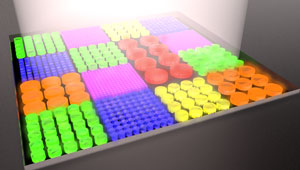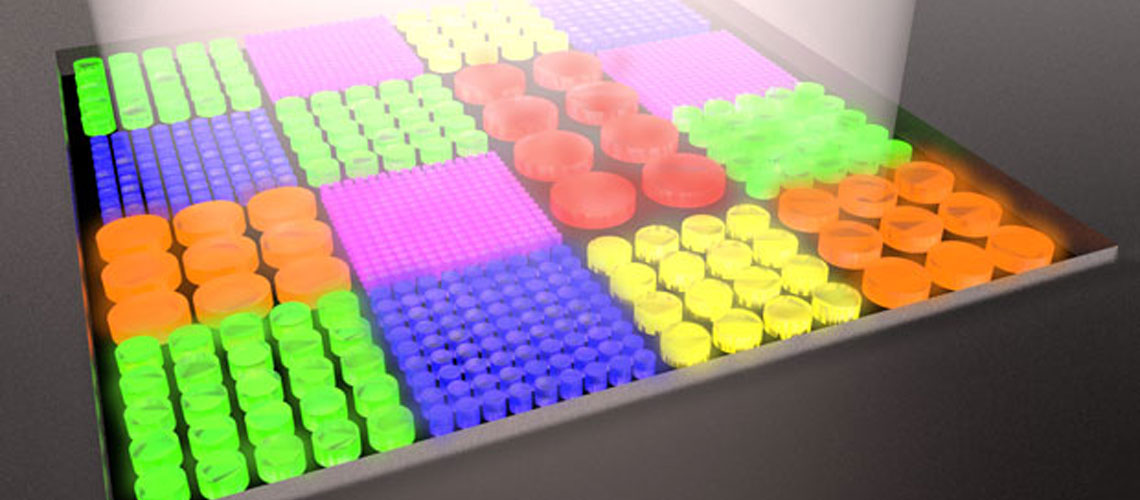
Cylindrical silicon nanoparticles of different sizes reflect light across a wide gamut of colors
© 2018 A*STAR Data Storage Institute
Color prints produced on contemporary printers have a resolution of a few thousand dots per inch (dpi), but an alternative strategy that harnesses the power of nanotechnology can improve this resolution by an order of magnitude.
Depositing ink droplets on a surface to create color pictures is a centuries-old technology. A*STAR researchers are now testing a new method, which uses an array of nanostructures that reflect light of the desired color. As these structures, or pixels, are much smaller than ink drops, a resolution of up to 100,000 dpi could, in principle, be achieved.
Nanostructures influence light through so-called optical resonances. In the case of metals, these optical resonances are due to the excitation of plasmons – light strongly couples to spatially-confined electrons on the surface, and is either absorbed or reflected depending on its wavelength. The peak reflectivity wavelength, and thus the apparent color of the pixel, is tunable by changing the dimensions of the nanostructures.
Plasmonic materials are often noble metals, such as gold and silver, or aluminum. But these materials are constrained by price, spectrum coverage, or the low purity of the color they reflect.
Ramón Paniagua-Domínguez from the A*STAR Data Storage Institute and co-workers investigate semiconductor nanostructures made of silicon. They measure the optical properties of an array of discs with diameters ranging from 50 to 250 nanometers under illumination conditions suited for a practical implementation.
“We compared the quality of colors generated by silicon particles with those from silver and aluminum plasmonic particles,” says Paniagua-Domínguez. “We showed that the colors obtained are of far better quality in terms of hue, gamut and intensity.”
The improvement is because the colors from silicon do not stem from plasmonic resonances as they do in the noble metals, but rather from geometrical resonances that originate from bound electrons. Consequently, silicon is less affected by absorption losses than silver or aluminum and so can produce a sharper reflectance spectrum, meaning a better color purity.
The technology for fabricating silicon nanostructures is well developed due to its broad adoption in the manufacture of electronics. Thanks to this they were able to reproduce masterpieces such as Edvard Munch’s The Scream in an area smaller than one square-millimeter.
“Our focus is on expanding the color gamut to go beyond the standard widely adopted in the display industry,” says Paniagua-Domínguez. “We will also explore mechanisms to actively control the resonances, and therefore the color, of the particles, to bring this technology closer to application in ultra-high-definition displays.”
The A*STAR-affiliated researchers contributing to this research are from the Data Storage Institute.




